Retro Replay Review
Gameplay
Psycho Fox delivers a classic side-scrolling platform experience that harkens back to the golden age of 16-bit gaming. You guide your chosen character—be it the nimble fox, the heavy-footed hippo, the swift leopard, or the agile Monkey Boy—across seven distinct worlds, each subdivided into three challenging areas. Along the way, you’ll face a variety of environmental hazards from spikes and fireballs to cannonballs and rising steam vents. The level design mixes precise jumps with timed obstacles, rewarding players who learn enemy patterns and terrain quirks.
(HEY YOU!! We hope you enjoy! We try not to run ads. So basically, this is a very expensive hobby running this site. Please consider joining us for updates, forums, and more. Network w/ us to make some cash or friends while retro gaming, and you can win some free retro games for posting. Okay, carry on 👍)
Combat is straightforward yet satisfying: you can punch approaching foes or jump on them repeatedly to send them flying off-screen. Should you miss a stomp, they pop back to life, adding a layer of urgency to each encounter. Scattered throughout levels are fragile eggs that conceal helpful power-ups like invincibility, switches to open hidden routes, or the chance to hatch a companion bird. This bird can be thrown at enemies or act as a one-hit shield, letting you absorb an extra hit before losing a life.
The boss encounters at the end of each world add intensity, though they occasionally recycle the same designs in later stages. Each boss demands pattern recognition and timing rather than brute force, often requiring you to leap or punch at precisely the right moment. Losing all three lives means game over—but thankfully, you can continue from your last world. With limited lives and no health bar, each misstep counts, making every jump and punch feel significant in your quest to clear all seven worlds.
Graphics
Psycho Fox sports vibrant, cartoon-inspired visuals that pop on the Sega Master System. Character sprites are crisp and colorful, giving each hero their own personality—Fox’s bright orange fur, Hippo’s pudgy frame, Leopard’s spotted coat, and Monkey Boy’s playful expression all stand out against varied backdrops. From lush forests to volcanic caverns, each world is distinct and packed with charming details like swaying plants and flickering torches.
Though limited by the hardware of its time, the game leverages parallax scrolling sparingly to create depth in key areas, especially during boss battles. The animation cycles are smooth for basic actions—running, jumping, punching—and eggs shatter with a satisfying crack. Enemies, while somewhat repetitive, move with enough bounce and flair to keep encounters lively. Even the barreling cannonballs and sneaky steam vents are animated clearly, allowing you to react in split seconds.
For collectors, the Brazilian variant Sapo Xulé vs. Os Invasores do Brejo delivers an amusing cultural twist: Psycho Fox’s visuals are overlaid with a toad in stinky shoes, while sidekicks and villains are reskinned as pig, mouse, and turtle characters. Though purely cosmetic, this localization adds a unique flavor without sacrificing the crisp pixel art or level aesthetics that fans of 8- and 16-bit era games still appreciate today.
Story
Psycho Fox doesn’t weave a deep narrative tapestry—instead, it offers a simple premise: guide your hero through seven perilous worlds to defeat a series of bosses intent on your destruction. There’s minimal exposition beyond the opening screen and the end-of-world boss fights. Yet this simplicity works in favor of the game’s focus on tight, arcade-style action rather than lengthy cutscenes.
The modest story framework allows you to concentrate on mastering levels and collecting items. Each world has its own visual identity—icy caverns, lush jungles, or fiery mountains—but the central goal remains consistent: clear the stages, gather eggs, and survive boss encounters. Occasional text prompts hint at a larger conflict, but the satisfaction comes from overcoming gameplay challenges rather than unraveling a complex plot.
Collectors and retro enthusiasts will find added novelty in the Brazilian Sapo Xulé version, which replaces the main fox with a mischievous, odor-emitting toad. While the storyline mechanics stay intact, the swapped characters and enemies give longtime fans a fresh storyline twist, grounded in 1980s Brazilian pop culture. For newcomers, though, Psycho Fox’s straightforward heroic quest remains perfectly adequate as a vessel for its tight platforming design.
Overall Experience
Psycho Fox strikes a nostalgic chord for fans of classic platformers. Its combination of straightforward controls, memorable level design, and slight character variety makes for an addictive experience that’s easy to pick up but challenging to master. Moments of triumph—clearing a treacherous spike pit, nailing a mid-air stomp on a cannonball, or besting a boss after several tries—evoke the satisfying spike of nostalgia that only retro gaming can provide.
While some later bosses rehash earlier designs, the game’s relatively short length and ability to continue from your last world keep frustration to a minimum. The hidden bonus areas, discovered by exploiting springs or collecting white bags, add replay value and encourage exploration. Hunting for eggs and invincibility power-ups injects a light RPG element into the platforming, rewarding attentive players.
Ultimately, Psycho Fox is a charming time capsule of Sega’s Master System era: bright, challenging, and brimming with pixelated personality. Whether you’re chasing high scores or simply seeking a breezy dose of retro fun, it remains a worthy addition to any collection. The Brazilian Sapo Xulé variation sweetens the deal for those intrigued by quirky localization history, while the core gameplay remains as punchy and engaging now as it was upon release.
 Retro Replay Retro Replay gaming reviews, news, emulation, geek stuff and more!
Retro Replay Retro Replay gaming reviews, news, emulation, geek stuff and more!
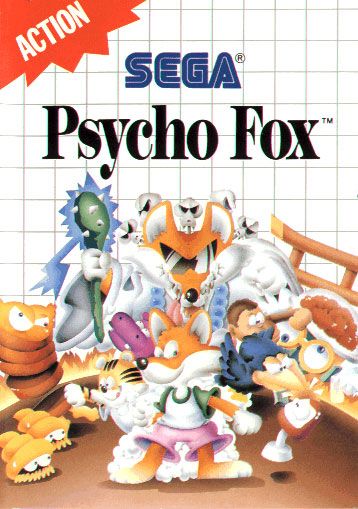
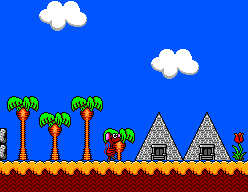
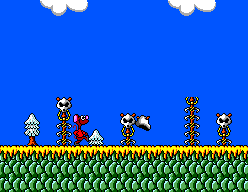

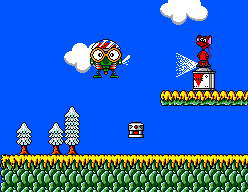
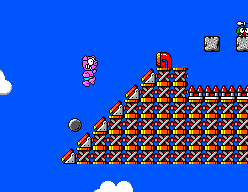



Reviews
There are no reviews yet.